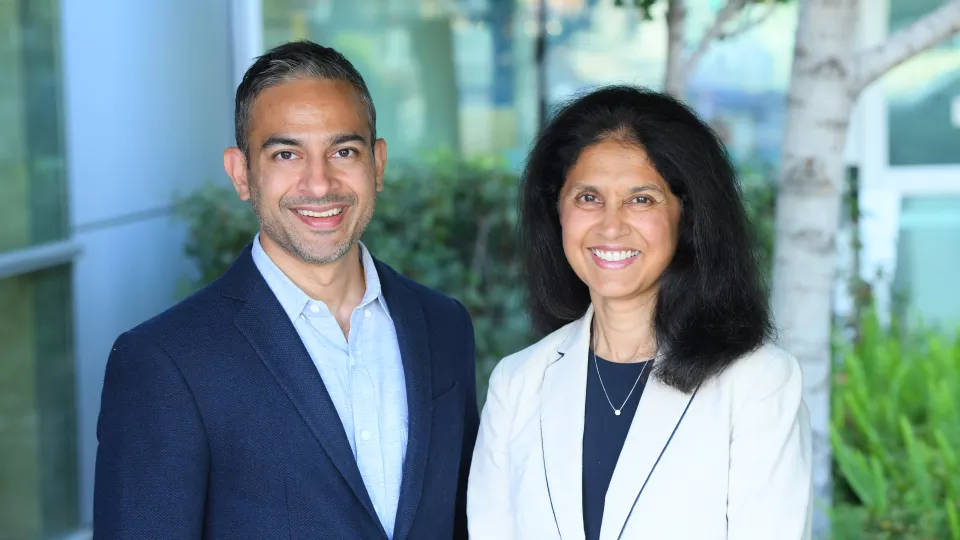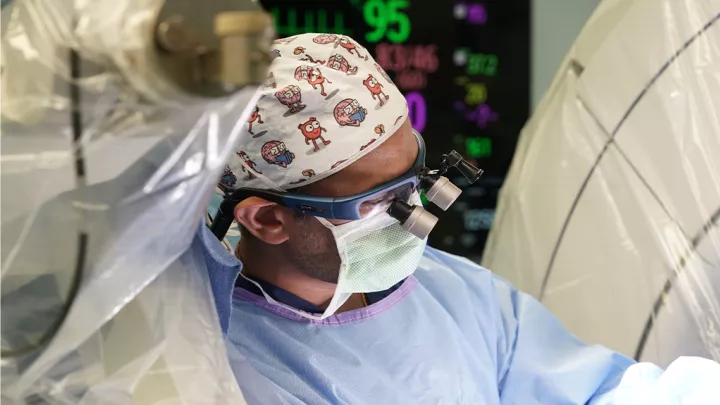
Left to right: Virendra R. Desai, MD, and Sucheta Joshi, MD, MS, FAAP, FAES
5 Trends That Are Changing Pediatric Epilepsy Care
Epilepsy is the most common pediatric brain disorder, affecting nearly half a million children in the U.S. And yet, only about 1% of patients who should be seen at a comprehensive epilepsy center are ever referred to this care.
That’s a devastating statistic, especially for children—whose uncontrolled seizures can sometimes lead to irreversible developmental deficits.
“In epilepsy, time is brain,” says Sucheta Joshi, MD, MS, FAAP, FAES, Medical Director of the Comprehensive Epilepsy Center at Children’s Hospital Los Angeles—which has a Level 4 designation from the National Association of Epilepsy Centers, the highest available. “Timely control of a child’s seizures is critical for their development and quality of life.”
Fortunately, there are more options than ever before to treat a child’s seizures. Dr. Joshi and Virendra R. Desai, MD, Surgical Director of CHLA’s Comprehensive Epilepsy Center, share the latest trends in care—and why “doing OK” is not good enough for kids.
1. Medical treatments are becoming more precise.
“This is a very exciting time in epilepsy care,” Dr. Joshi says. “New drugs and therapies are being developed, and we have a better understanding of how certain epilepsies are mediated at the cellular and neurotransmitter level.”
That improved understanding is allowing epileptologists to more precisely choose—or avoid—certain medications for specific forms of epilepsy. This knowledge also helps inform which patients may best benefit from a ketogenic diet for their seizures.
In addition, CHLA’s center has an on-site clinic for genetic testing, a critical component given that more than 500 genes have now been linked to epilepsy. Novel therapies such as antisense oligonucleotide drugs, which target specific genetic variants or sequences, are currently in clinical trials for pediatric epilepsy.
“These kinds of compounds have the potential to be game changers for children with genetic forms of epilepsy,” Dr. Joshi says.
2. Surgical options are less invasive—and open to more patients.
“There are a lot of misconceptions about who is a candidate for epilepsy surgery,” Dr. Desai says. “If an MRI is negative, or an EEG shows that seizures are coming from multiple places in the brain, many physicians assume those patients are not surgical candidates. But that’s not true.”
And while major open surgeries were the norm in the past, many epilepsy surgeries today are minimally invasive—using robotic technology, lasers, tiny incisions, implantable devices, and miniature electrodes to both diagnose and treat seizures.
Surgical options today can also work alongside medical therapies. “We don’t think of surgery and medications in silos anymore,” Dr. Joshi explains. “We can sometimes combine novel drugs with surgical approaches to achieve better outcomes.”
3. New techniques target neural networks, not ‘bad brain.’
One of the newest surgical approaches for pediatric epilepsy is thalamic responsive neurostimulation (RNS). This robotic-assisted procedure involves implanting a small RNS device in the thalamus—a major control center for the brain. The device continually monitors a patient’s brain waves and delivers a tiny electrical impulse to stop seizures in their tracks.
“The goal is to modulate a whole network of different parts of the brain that are communicating in an abnormal way to ignite a seizure,” Dr. Desai says. “It’s a different approach than targeting a piece of ‘bad brain.’”
Thalamic RNS offers a much-needed treatment option for children with multifocal seizures who do not respond to medication or diet therapy. Dr. Desai says many patients see more than a 90% reduction in seizures.
4. ‘Doing OK’ is not good enough.
When a child’s seizures improve by a certain amount, physicians and families often assume that no further improvement is possible. But that is a mistake.
“Because a child is having fewer seizures, it’s sometimes just accepted that this is how it’s going to be,” Dr. Joshi says. “But just doing OK is not good enough. If a child’s seizures are not fully controlled, then that child needs to be evaluated at a Level 4 epilepsy center because there may be better options. These are the kids we need to see.”
5. Early referral to an epilepsy center is more important than ever.
Although current guidelines call for children to be referred to a comprehensive epilepsy center if they fail two anti-seizure medications, there is a growing movement in the field to speed that referral time.
Dr. Desai notes that some groups now recommend that a pediatrician refer a child to an epilepsy center after three months if that child’s seizures are not controlled. For neurologists, the recommendation is a referral after 12 months.
With today’s more advanced therapies, the sooner a child receives the right diagnosis and care, the better.
“At CHLA, we offer the full range of epilepsy diagnostics and treatments, and we look at each child individually to create a plan that’s tailored to that child’s type of epilepsy,” Dr. Joshi says. “It’s not one-size-fits-all. That early, precision treatment can make a tremendous difference in helping a child to be seizure-free.”


